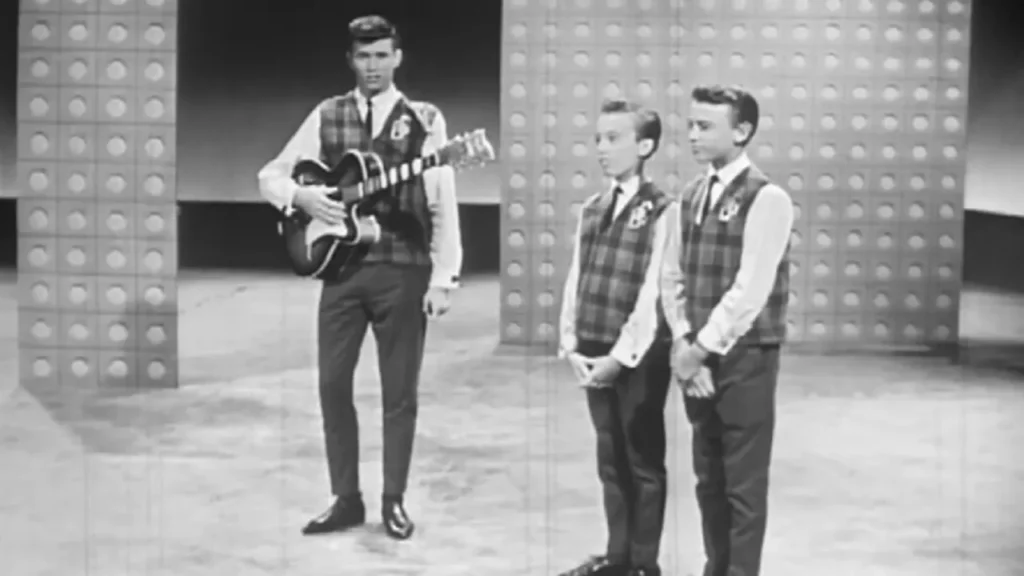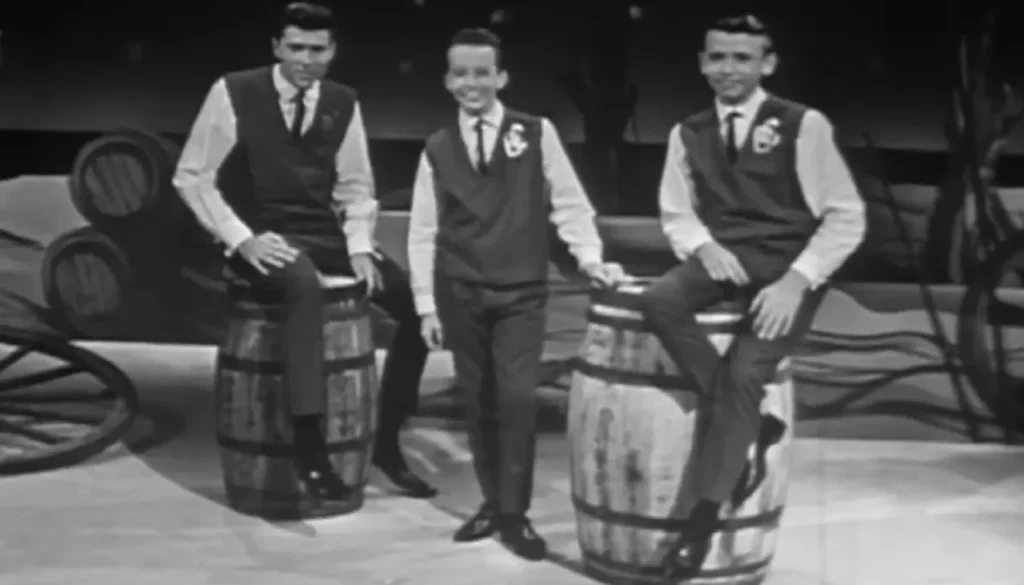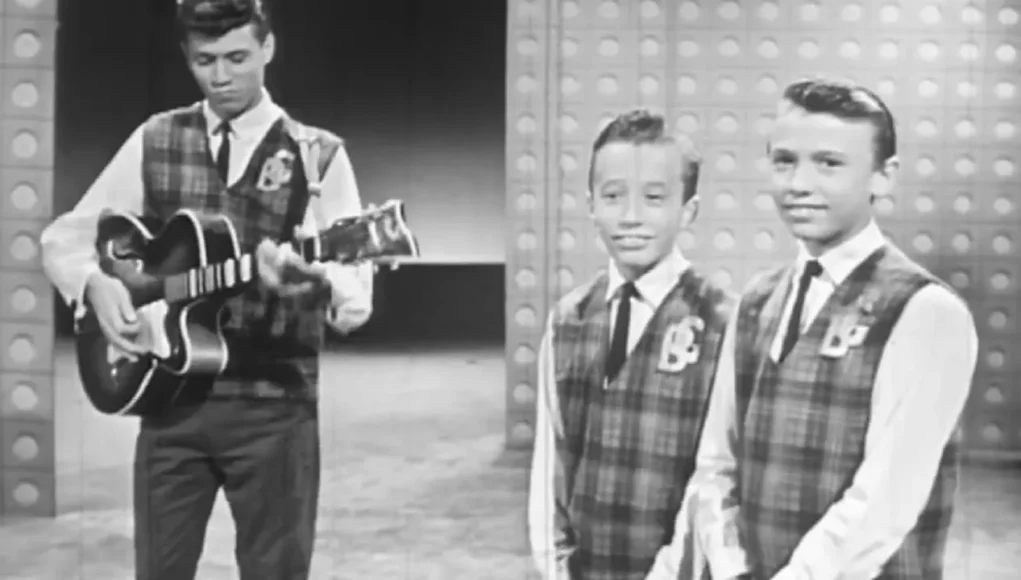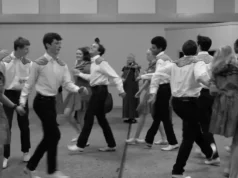The Bee Gees, one of the most iconic groups in music history, left an indelible mark on pop culture. Known for their unique harmonies and ability to evolve with the times, the Gibb brothers—Barry, Robin, and Maurice—are remembered for their versatility and timeless appeal. While they are often associated with the disco era, their early days on the Australian music scene are equally captivating. During these formative years, in 1963, they first performed Bob Dylan’s “Blowin’ in the Wind” on Brian Henderson’s “Bandstand“, setting the stage for their future success.

The Early Years
Born on the Isle of Man and raised in Manchester, England, the Gibb brothers moved to Australia as children with their family. This was where they began honing their musical skills. Influenced by a mix of early rock ‘n’ roll, folk, and soul, they developed their signature sound, blending Barry’s rich lead vocals with the tight harmonies of Robin and Maurice.
In 1958, the Bee Gees were formed. Their initial years were marked by struggle and perseverance, performing at local events like stock car races or department store rooftops. Though they faced obstacles, their big break came on the popular TV show “Bandstand,” where their cover of “Blowin’ in the Wind” amazed viewers. The world saw not just three young boys performing, but future legends in the making.
Musical Evolution
While the Bee Gees’ early performances like “Blowin’ in the Wind” showcased their folk and pop roots, they would soon become famous for their groundbreaking contributions to the disco era. Their ability to adapt and evolve musically sets them apart from other artists. After finding success with pop hits in the late 1960s, the group reinvented their sound in the 1970s, contributing massively to the rise of disco music with albums like Saturday Night Fever.
Key songs like “Stayin’ Alive”, “Night Fever”, and “How Deep Is Your Love” cemented their place in music history. Their harmonies, defined by Barry’s distinctive falsetto, combined with the trio’s tight vocal synchronization, created a sound that was both unique and highly influential. Their ability to transition between genres allowed the Bee Gees to remain relevant across multiple decades.
Cultural Impact and Legacy
The Bee Gees weren’t just a band—they were a cultural phenomenon. Their influence stretched far beyond the disco era, impacting countless artists across different genres. The group’s signature harmonies and genre-blending sound became a template for future musicians to emulate.
Beyond their contribution to disco, the Bee Gees received numerous accolades, including 10 Grammy Awards. They were inducted into the Rock and Roll Hall of Fame and the Vocal Group Hall of Fame. Their legacy also includes their remarkable songwriting—penning hits not just for themselves but for other artists like Diana Ross and Barbra Streisand. The brothers’ impact on music is further highlighted by their sales, with over 220 million records sold globally.

The Bee Gees Journey
Reflecting on the Bee Gees’ legacy, it’s clear that their journey from young performers on “Bandstand” to music legends is a story of perseverance, innovation, and musical genius. Their ability to evolve and transcend genres has imprinted on popular culture. From their beginnings as three brothers with a dream to becoming global icons, the Bee Gees’ music inspires new generations. Their sound’s timeless nature, contributions to the music industry, and undeniable influence ensure that their legacy will endure for decades to come.







